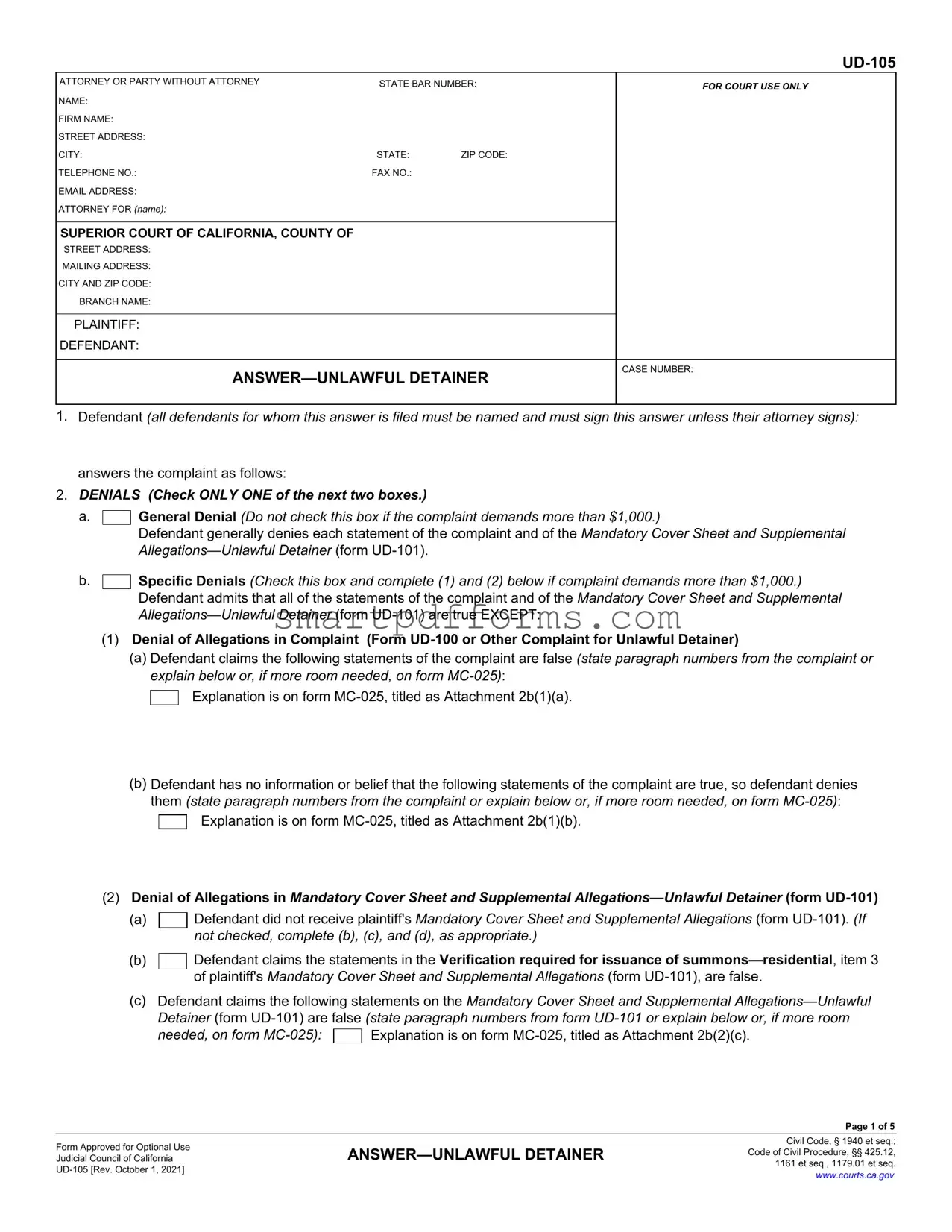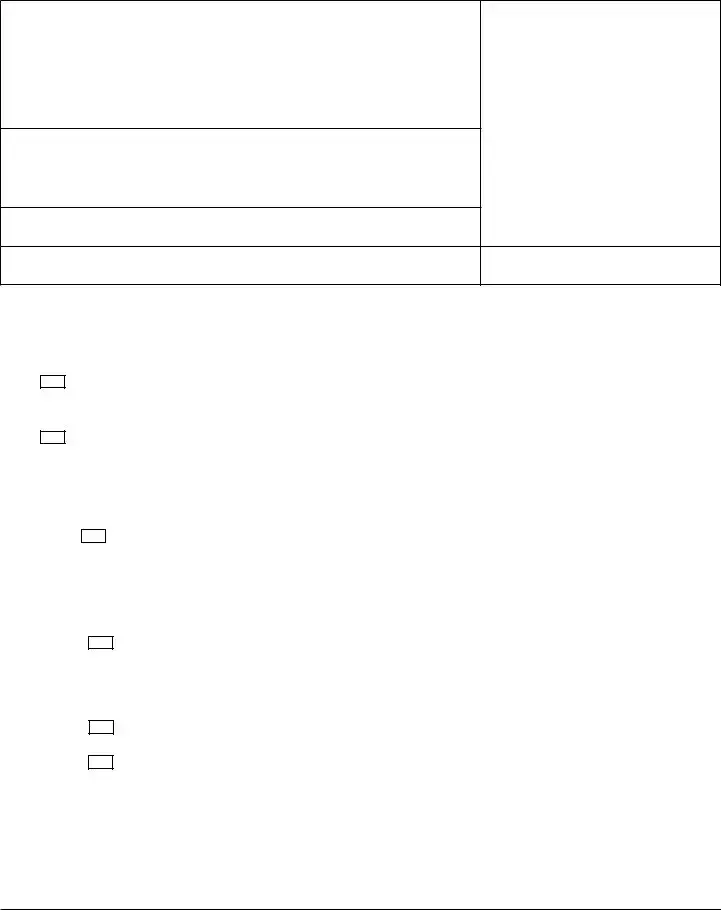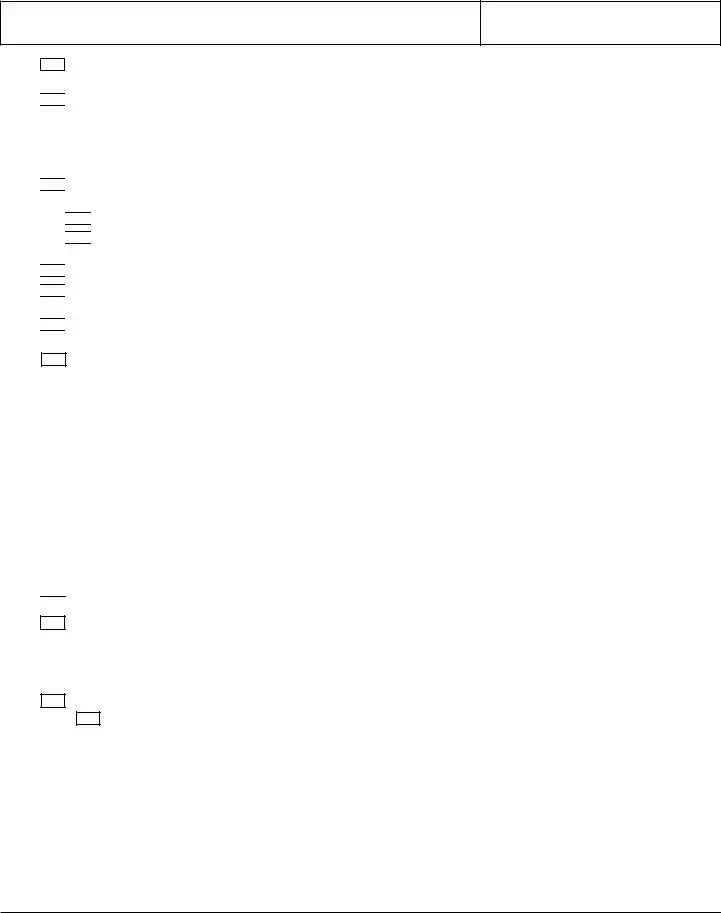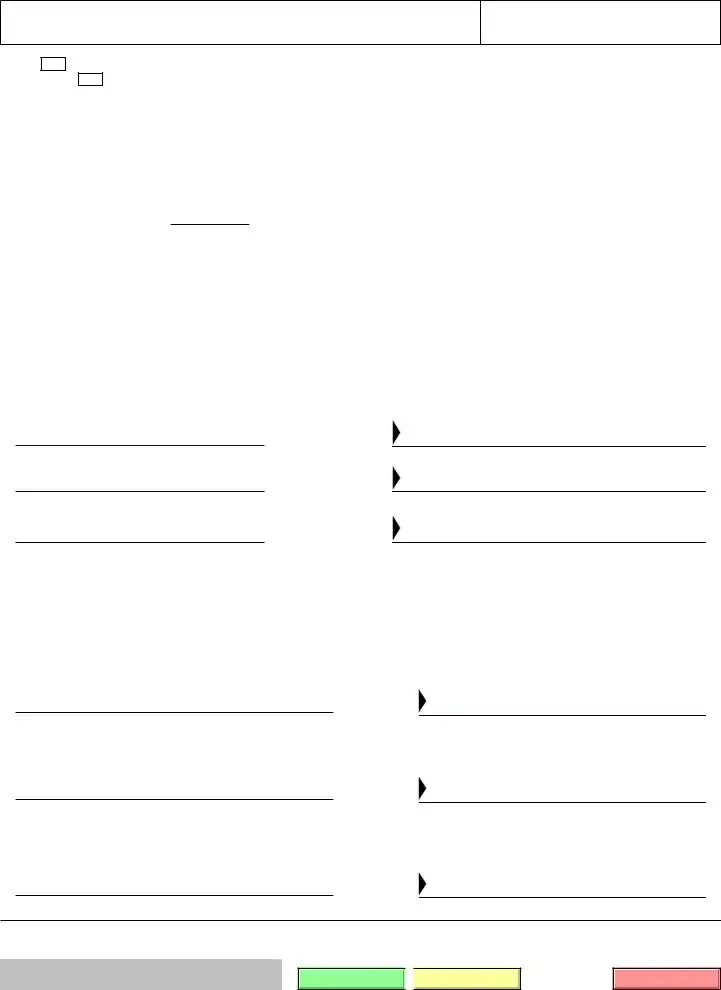3. q. Plaintiff violated the COVID-19 Tenant Relief Act (Code Civ. Proc., § 1179.01 et seq.) or a local COVID-19–related ordinance regarding evictions in some other way (briefly state facts describing this in item 3w).
r. 
 The property is covered by the federal CARES Act and the plaintiff did not provide 30 days' notice to vacate. (Property covered by the CARES Act means property where the landlord:
The property is covered by the federal CARES Act and the plaintiff did not provide 30 days' notice to vacate. (Property covered by the CARES Act means property where the landlord:
•is participating in a covered housing program as defined by the Violence Against Women Act;
•is participating in the rural housing voucher program under section 542 of the Housing Act of 1949; or
•has a federally backed mortgage loan or a federally backed multifamily mortgage loan.)
s. 
 Plaintiff improperly applied payments made by defendant in a tenancy that was in existence between March 1, 2020, and September 30, 2021 (Code Civ. Proc., § 1179.04.5), as follows (check all that apply):
Plaintiff improperly applied payments made by defendant in a tenancy that was in existence between March 1, 2020, and September 30, 2021 (Code Civ. Proc., § 1179.04.5), as follows (check all that apply):
(1) 
 Plaintiff applied a security deposit to rent, or other financial obligations due, without tenant’s written agreement.
Plaintiff applied a security deposit to rent, or other financial obligations due, without tenant’s written agreement.
(2) 
 Plaintiff applied a monthly rental payment to rent or other financial obligations that were due between March 1, 2020, and September 30, 2021, other than to the prospective month’s rent, without tenant’s written agreement.
Plaintiff applied a monthly rental payment to rent or other financial obligations that were due between March 1, 2020, and September 30, 2021, other than to the prospective month’s rent, without tenant’s written agreement.
t. 
 Plaintiff refused to accept payment from a third party for rent due. (Civ. Code, § 1947.3; Gov. Code, § 12955.)
Plaintiff refused to accept payment from a third party for rent due. (Civ. Code, § 1947.3; Gov. Code, § 12955.)
u. 
 Defendant has a disability and plaintiff refused to provide a reasonable accommodation that was requested. (Cal. Code Regs,. tit. 2, § 12176(c).)
Defendant has a disability and plaintiff refused to provide a reasonable accommodation that was requested. (Cal. Code Regs,. tit. 2, § 12176(c).)
v. 
 Other defenses and objections are stated in item 3w.
Other defenses and objections are stated in item 3w.
w.(Provide facts for each item checked above, either below or, if more room needed, on form MC-025):
Description of facts or defenses are on form MC-025, titled as Attachment 3w.
4. OTHER STATEMENTS
a. |
|
Defendant vacated the premises on (date): |
b. The fair rental value of the premises alleged in the complaint is excessive (explain below or, if more room needed, on form MC-025):
The fair rental value of the premises alleged in the complaint is excessive (explain below or, if more room needed, on form MC-025):
Explanation is on form MC-025, titled as Attachment 4b.






 The property is covered by the federal CARES Act and the plaintiff did not provide 30 days' notice to vacate.
The property is covered by the federal CARES Act and the plaintiff did not provide 30 days' notice to vacate. 
 Plaintiff improperly applied payments made by defendant in a tenancy that was in existence between March 1, 2020, and September 30, 2021 (Code Civ. Proc., § 1179.04.5), as follows
Plaintiff improperly applied payments made by defendant in a tenancy that was in existence between March 1, 2020, and September 30, 2021 (Code Civ. Proc., § 1179.04.5), as follows 
 Plaintiff applied a security deposit to rent, or other financial obligations due, without tenant’s written agreement.
Plaintiff applied a security deposit to rent, or other financial obligations due, without tenant’s written agreement.
 Plaintiff applied a monthly rental payment to rent or other financial obligations that were due between March 1, 2020, and September 30, 2021, other than to the prospective month’s rent, without tenant’s written agreement.
Plaintiff applied a monthly rental payment to rent or other financial obligations that were due between March 1, 2020, and September 30, 2021, other than to the prospective month’s rent, without tenant’s written agreement.
 Plaintiff refused to accept payment from a third party for rent due. (Civ. Code, § 1947.3; Gov. Code, § 12955.)
Plaintiff refused to accept payment from a third party for rent due. (Civ. Code, § 1947.3; Gov. Code, § 12955.)
 Defendant has a disability and plaintiff refused to provide a reasonable accommodation that was requested. (Cal. Code Regs,. tit. 2, § 12176(c).)
Defendant has a disability and plaintiff refused to provide a reasonable accommodation that was requested. (Cal. Code Regs,. tit. 2, § 12176(c).)
 Other defenses and objections are stated in item 3w.
Other defenses and objections are stated in item 3w. The fair rental value of the premises alleged in the complaint is excessive
The fair rental value of the premises alleged in the complaint is excessive 

 Save this form
Save this form